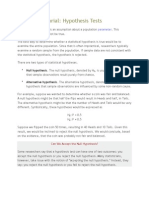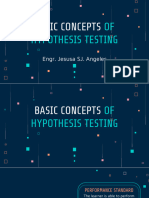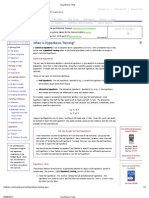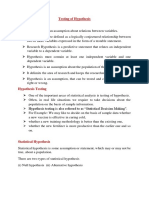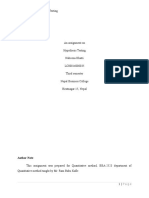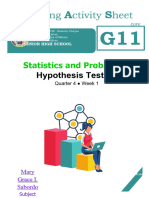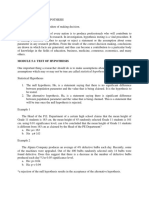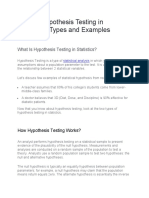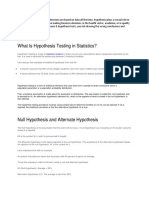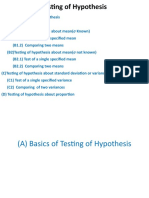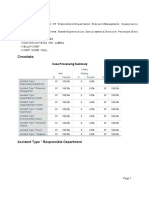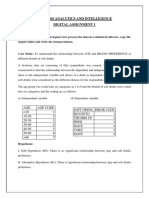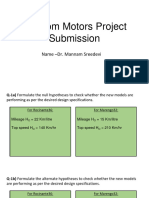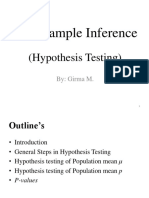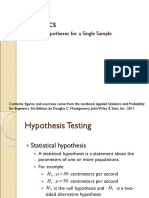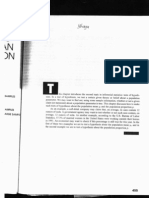0% found this document useful (0 votes)
14 views4 pagesStats and Prob
The document discusses key concepts in hypothesis testing including null and alternative hypotheses, types of errors, levels of significance, and one-tailed and two-tailed tests. Hypothesis testing involves making claims about a population and testing assumptions through collecting sample data to determine whether to accept or reject the null hypothesis.
Uploaded by
Tubio Thomas PhillipCopyright
© © All Rights Reserved
We take content rights seriously. If you suspect this is your content, claim it here.
Available Formats
Download as DOCX, PDF, TXT or read online on Scribd
0% found this document useful (0 votes)
14 views4 pagesStats and Prob
The document discusses key concepts in hypothesis testing including null and alternative hypotheses, types of errors, levels of significance, and one-tailed and two-tailed tests. Hypothesis testing involves making claims about a population and testing assumptions through collecting sample data to determine whether to accept or reject the null hypothesis.
Uploaded by
Tubio Thomas PhillipCopyright
© © All Rights Reserved
We take content rights seriously. If you suspect this is your content, claim it here.
Available Formats
Download as DOCX, PDF, TXT or read online on Scribd
/ 4


